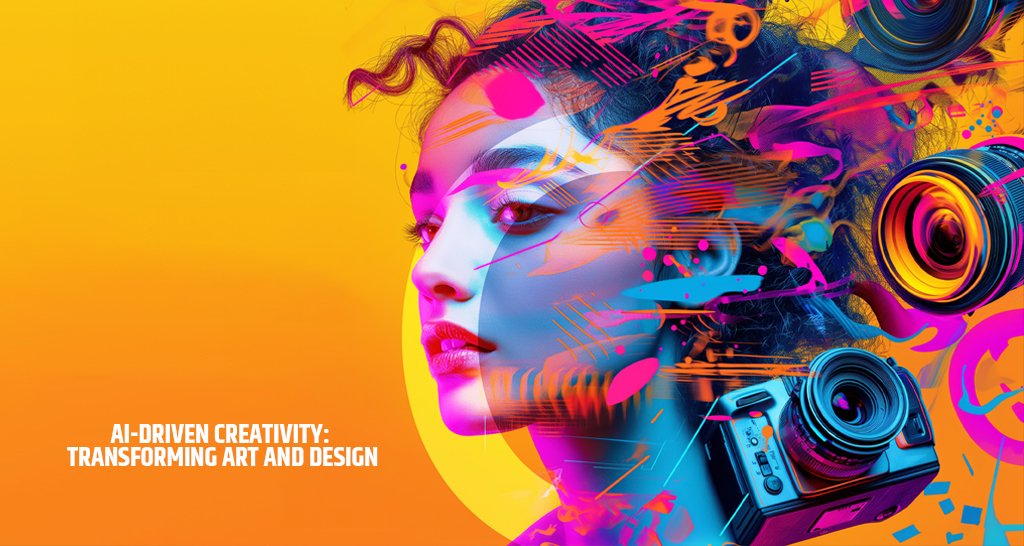Introduction to AI in Art and Design
The integration of artificial intelligence (AI) into art and design marks a significant evolution in the creative landscape, transforming how artists and designers approach their work. Over the past few decades, AI technologies have advanced remarkably, moving from theoretical concepts to practical applications that facilitate and enhance creative expression. Today, various tools and systems harness the capabilities of machine learning and neural networks to assist creators in various artistic pursuits.
AI-driven creativity encompasses a range of applications, from generating new visual artworks to enhancing design processes. These systems analyze vast datasets, learning from patterns and styles to produce unique pieces or provide recommendations tailored to individual creators’ preferences. As artists increasingly incorporate AI into their workflows, they often find that the technology can stimulate inspiration, propose novel ideas, and streamline labor-intensive tasks, allowing them to focus more on their core creative instincts.
However, the rise of AI in the creative fields also prompts critical discussions around authorship, originality, and the definition of artistry. The question arises whether a piece created with the help of AI can be classified as purely the artist’s work or if the technology shares responsibility in the creative process. This debate highlights the changing dynamics of creativity, urging artists, designers, and audiences alike to reconsider traditional notions of artistry, originality, and ownership in an era defined by intelligent machines and their expanding capabilities.
As we delve deeper into the implications of AI in art and design, it becomes clear that while these technologies offer exciting opportunities for innovation and exploration, they also challenge fundamental principles that have guided artistic expression for centuries. The integration of AI thus signifies not only progress but also a pivotal moment of reflection within the creative community.
The Creative Process Enhanced by AI
The integration of artificial intelligence into the creative process has fundamentally altered how artists and designers approach their work. Innovations such as generative algorithms and machine learning-driven design software facilitate a new form of collaboration between human creativity and machine intelligence. These advanced tools harness vast datasets to generate unique patterns and concepts, providing a fresh source of inspiration for artists.
Generative algorithms, for instance, allow creators to define parameters and explore a wide array of outputs, resulting in artwork that is both innovative and unexpected. This capability enables artists to venture outside their usual styles and discover new artistic directions they might not have considered otherwise. By leveraging these algorithms, the creative process becomes a dynamic, iterative journey that encourages experimentation and pushes the limits of traditional art and design.
Furthermore, AI-assisted image editing tools significantly streamline the workflow of designers and artists. Tasks such as color correction, cropping, or even complex adjustments can be automated, freeing up time for professionals to focus on more intricate and meaningful aspects of their projects. This automation not only enhances productivity but also allows artists to reallocate their creative energy towards conceptualizing and refining their ideas.
Machine learning-based design software complements these enhancements by learning user preferences over time, thereby offering tailored suggestions to improve design outcomes. This personalized approach to creativity facilitates a collaborative relationship between human intuition and AI capabilities, driving a more enriched creative process. Consequently, artists can explore uncharted territories in their work, experiment with new forms, and ultimately expand their creative horizons.
Case Studies of AI-Driven Art and Design
The integration of artificial intelligence in the realms of art and design has yielded groundbreaking results across various disciplines. One notable example is the collaboration between the artistic duo, Refik Anadol and the architectural firm, SOM. Anadol’s immersive installations often employ AI algorithms, which analyze vast datasets, including historical architectural styles and urban patterns. This approach has led to a revolutionary installation called “Archive Dreaming,” where AI-generated visuals render a unique interplay between culture and technology, showcasing how AI can redefine aesthetic experiences.
In the fashion industry, designer Maria Grazia Chiuri from Dior has experimented with AI to stimulate the creative process. By utilizing AI-generated designs, Chiuri has been able to explore motifs and patterns inspired by historical art movements, blending tradition with modernity. This approach has not only infused fresh ideas into the collections but has also sparked discussions on the intersection between technology and artisanal craftsmanship. Such projects illustrate the potential of AI-driven creativity as a tool for enhancing intuition while providing innovative solutions in the design process.
Architecture has also seen significant contributions from AI, as witnessed in the work of Zaha Hadid Architects. Through generative design software, the firm has advanced the development of complex geometries and sustainable structure formulations. For instance, the urban planning project “The Urban Habitat” utilizes AI to analyze environmental data, offering insights that help optimize spatial layouts. This showcases how AI can contribute greatly to sustainable design, enhancing both function and artistic integrity of built environments.
In the graphic design sector, artists like Kyle McDonald have pioneered AI in creating interactive installations that challenge viewers’ perceptions. His work blends AI algorithms with user input, resulting in an evolving visual narrative that changes with audience interaction. This synergy between technology and traditional artistic practice exemplifies the transformative impact of AI, revealing a landscape ripe with potential for future exploration in creative fields.
The Future of AI in Creative Fields
The rapid evolution of artificial intelligence (AI) is fundamentally altering the landscape of creative fields, particularly art and design. As we look towards the future, several predictions and emerging trends indicate that AI will play an increasingly significant role in artistic creation. With advancements in machine learning and neural networks, artists are beginning to explore how these technologies can augment their creative processes, leading to innovative forms of expression that blend human ingenuity with computational power.
One of the primary considerations as AI becomes more integrated into creative workflows is the ethical implications surrounding its use. Concerns about intellectual property, authorship, and the potential for bias in algorithmically generated art are becoming increasingly prevalent. Artists and technologists must navigate these challenges to ensure that the adoption of AI contributes positively to the landscape of creativity. This requires establishing clear guidelines and frameworks that protect human creators while embracing the capabilities that AI offers.
Moreover, the future promises a balance where human creativity and AI assistance coalesce, rather than compete. AI technologies can serve as tools for artists rather than substitutes, providing new avenues for exploration and experimentation. For instance, AI can analyze vast datasets of historical artworks and generate suggestions that inspire human artists, enhancing their creative output. The synergy between human intuition and machine intelligence can lead to previously unimagined artistic movements, pushing the boundaries of conventional art forms.
As we envision the future of creativity, collaboration between human artists and AI stands out as a key development. Emerging technologies will allow for dynamic partnerships, resulting in hybrid creations that draw from both human experience and algorithmic efficiency. In this landscape, the role of AI is not to replace the artist but to expand the creative possibilities available to them, fostering an environment where technology enriches rather than diminishes artistic expression.



